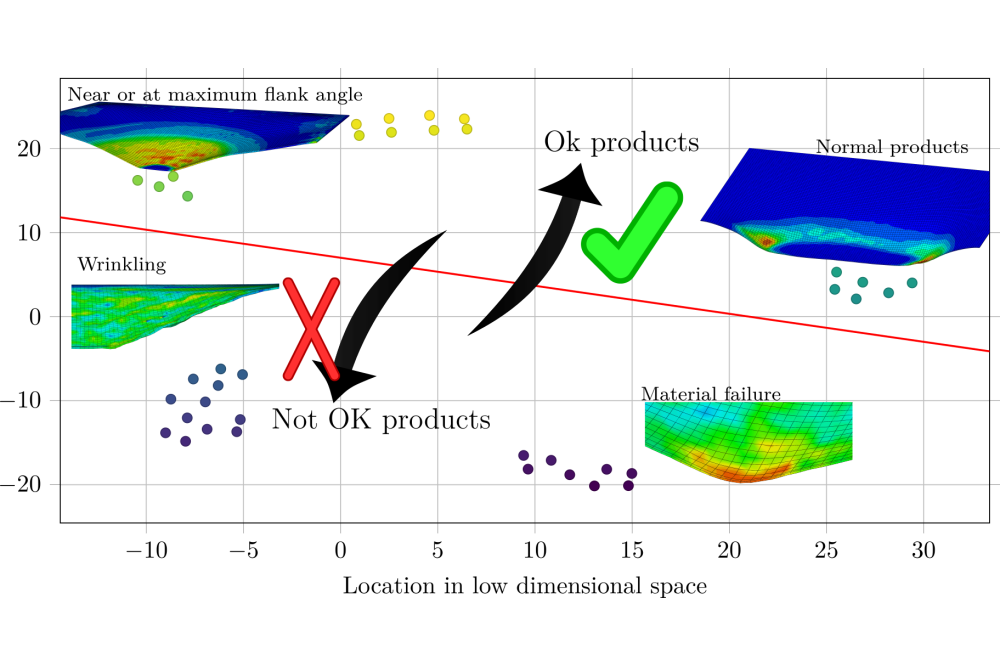Model Predictive Control With Integrated Condition Observer for the Adjustment of Component Quality for Incremental Forming of Vulcanized Fiber
Einleitung
Over the past decade, there has been a significant shift in the industrial sector towards sustainability, leading to innovations in forming processes and techniques. Vulcanized fiber, derived from cellulose, has found applications ranging from substrates to packaging. Using this material in a Single Point Incremental Forming (SPIF) process results in the development of cost-effective, complex yet recyclable prototypes. However, challenges arise due to the material’s inhomogeneity and anisotropy—affected by fiber orientations and variables such as humidity—which can compromise the quality of the final product. To address these issues, a data-driven model with closed-loop model is being developed. This approach requires a series of 3D simulations, given that conventional reduction techniques, like the usage of symmetries, aren’t applicable for this unique forming process.
Methoden
In this study, the anisotropic behavior of vulcanized fiber was comprehensively investigated. A series of experiments were carried out to describe the impact of humidity on the specific material designated for the intended process. This investigation examined the inherent hygroscopic properties of the material, assessing the resultant effects of humidity on its structural and mechanical properties. This assessment provided an understanding of the impact on the forming
process, providing necessary information to carry out adjustments and enhancements to the current material model. One of the key process determinants was the maximum formable flank angle, which delimits the constraints of the forming process. By analyzing the material’s mechanical response under varying conditions, we identified the critical threshold wherein excessive deformation or material failure occurs, mainly due to the anisotropy induced by the distinct fiber orientation. To further enhance our understanding and improve the predictive accuracy of the process, we undertook an extensive exploration of different geometries and forming parameters. This effort facilitated the creation of a database, which is essential for the formulation of the control-loop model.
Ergebnisse
The diverse and large number of determinants complicates the precise prediction of the material’s behavior, as well as the resultant outcome of the forming process. Tackling this complex problem requires a strategic reduction in dimensionality, for which unsupervised learning algorithms offer a promising way forward. By employing these advanced computational methods, we sought to identify and categorize various outcomes from the simulations. The primary goal was to delineate a likely process window through methodical clustering and identification of simulation results. Armed with these invaluable insights, the groundwork was laid for the development of an optimized model tailored for the control-loop mechanism. It is imperative to note that while significant progress has been made in understanding the influencing parameters and collecting relevant data, the actual formulation and refinement of the control-loop model is still a work in progress and has not reached its final stage.
Diskussion
The industry’s move towards sustainability has highlighted the potential of vulcanized fiber in forming processes such as SPIF. While its advantages over paper-based alternatives are obvious, complexities arise due to its anisotropic behavior and external factors like humidity. These studies have initiated the integration of unsupervised learning algorithms for prediction refinement. Future work will focus on finalizing the control-loop model and examining other external variables, enhancing the application in material forming.




